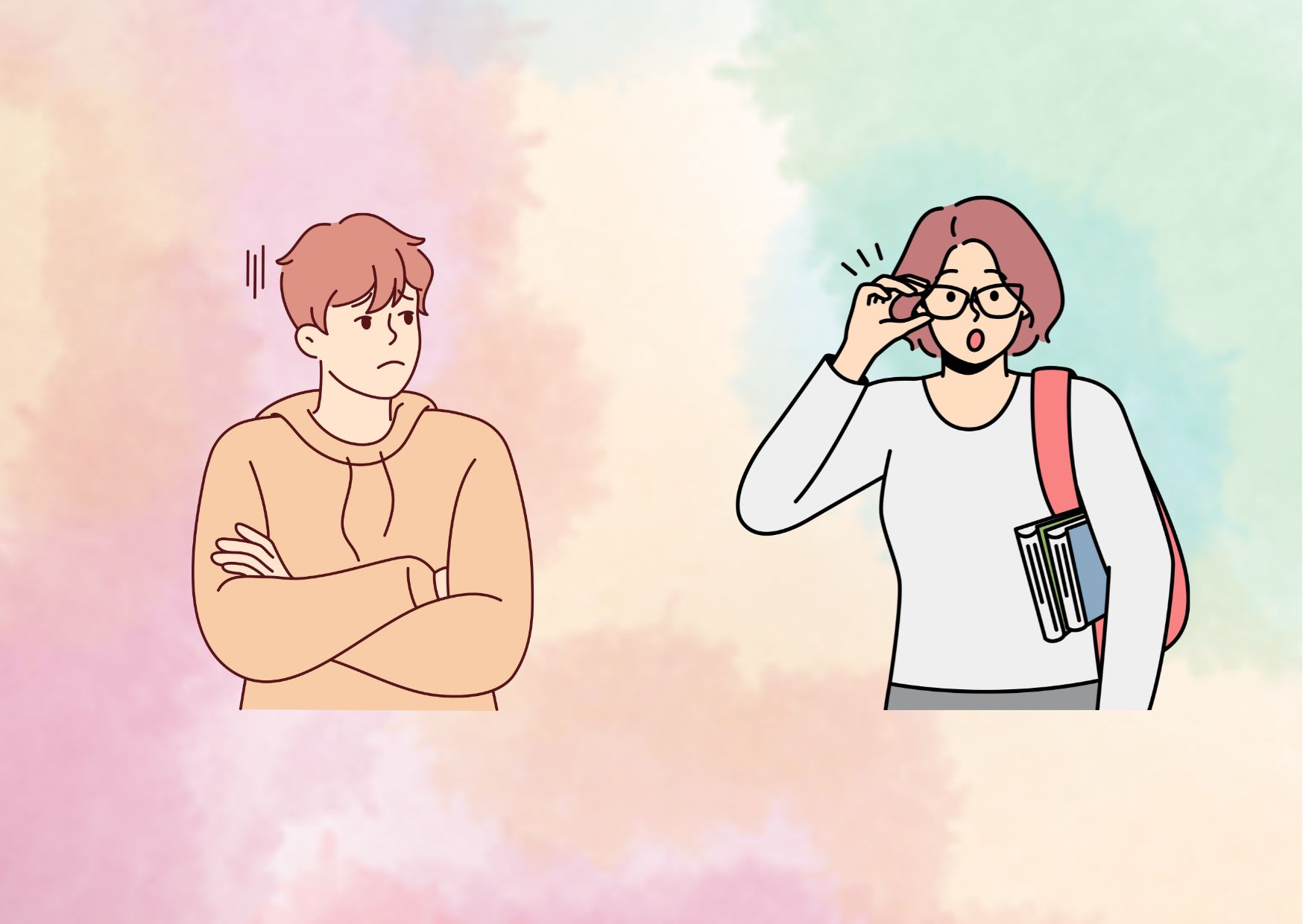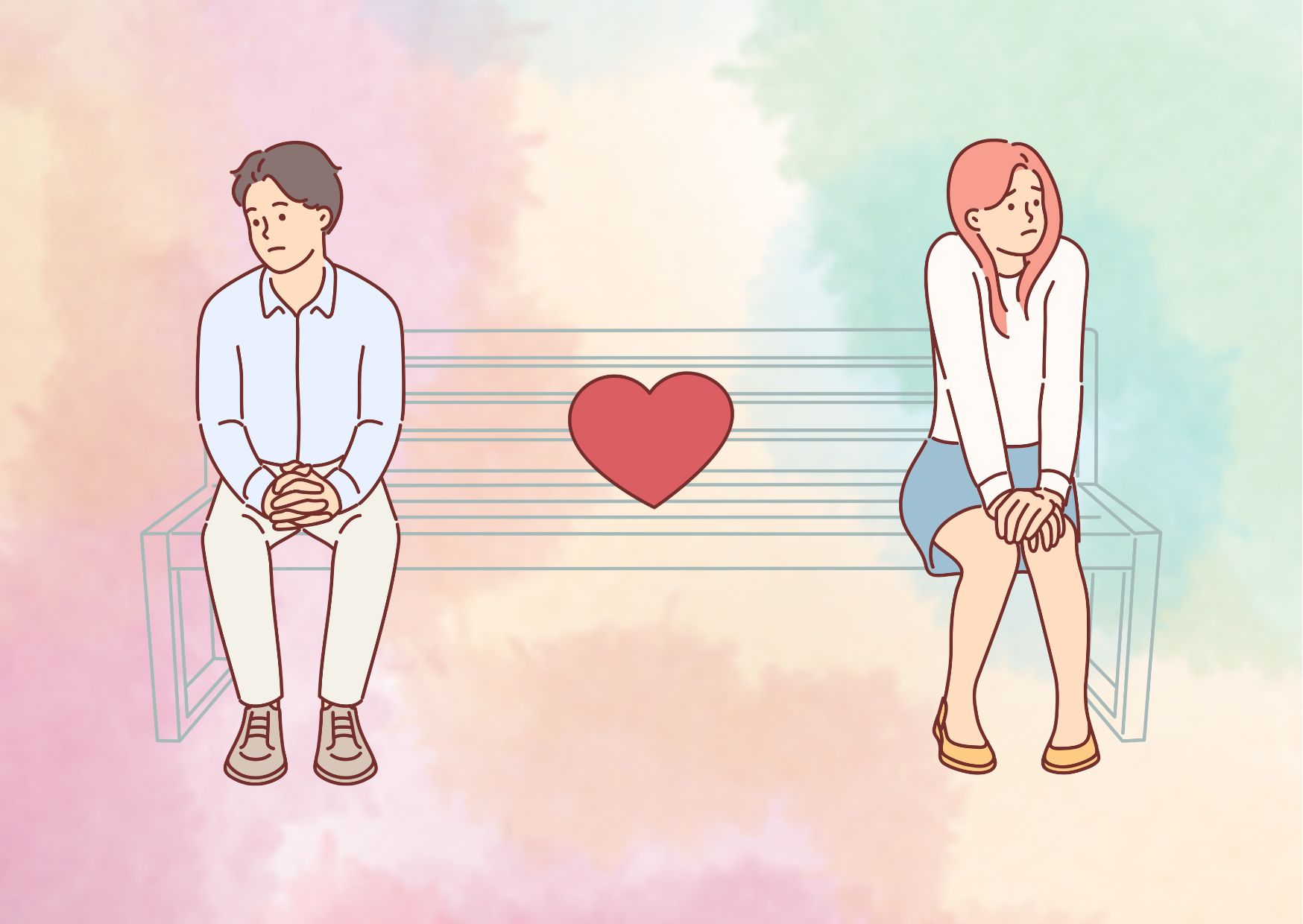Why Do Guys Stare at Me but Never Smile?
Have you ever found yourself in a situation where a guy’s eyes linger on you, yet he doesn’t offer a friendly smile or make an attempt to engage? This phenomenon of men staring without any apparent acknowledgment can leave many women perplexed and questioning the underlying motives behind such behavior.
This article delves into the intricate reasons why guys may stare at women, exploring factors like shyness, admiration, cultural nuances, and even lack of interest. By unraveling the mystery behind lingering gazes, we aim to provide insights that can aid in better understanding and navigating such encounters, whether they occur while walking by, at the gym, or in any other setting where prolonged eye contact raises curiosity.
Most Common Reasons for why Guys Stare
Shyness and Nervousness
One of the most common reasons why guys stare at women without smiling or engaging in conversation is shyness and nervousness. The act of admiring someone’s appearance can be accompanied by a sense of apprehension, especially in social situations or when initiating interactions with someone new.
When a guy finds a woman attractive, he may inadvertently stare as a result of being captivated by her presence. However, the fear of rejection, uncertainty about how to approach her, or a lack of confidence can prevent him from taking the next step and offering a friendly smile or striking up a conversation.
The Internal Battle
This internal battle between the desire to connect and the fear of potential rejection can manifest in subtle ways, such as lingering glances without any outward expression of interest. The guy may be struggling with the following thoughts:
- Self-doubt: “What if she’s not interested?” or “I might come across as creepy or weird.”
- Anxiety: Worrying about saying the wrong thing or feeling tongue-tied in the presence of someone they find attractive.
- Overthinking: Analyzing every possible scenario and outcome, leading to paralysis and inaction.
It’s important to understand that this behavior is often rooted in insecurity and a lack of confidence, rather than any malicious intent. Shyness and nervousness can cause even the most well-intentioned individuals to freeze up and resort to subtle glances as a way of admiring from a distance.
Breaking the Ice
While it may be frustrating to be on the receiving end of such behavior, it’s crucial to approach the situation with empathy and understanding. If you find yourself in a scenario where a guy is staring without smiling, consider taking the initiative to break the ice with a friendly smile or a casual greeting. This small gesture can help alleviate the tension and provide an opportunity for the shy individual to feel more at ease and potentially reciprocate the interaction.
Remember, shyness and nervousness are natural human emotions, and with patience and kindness, these barriers can be overcome, paving the way for genuine connections and meaningful interactions.
Admiration and Attraction
The Language of Eye Contact
While shyness and nervousness can sometimes manifest in lingering glances, prolonged eye contact can also be a powerful nonverbal cue indicating admiration and attraction. When a guy finds a woman captivating, his gaze may linger, conveying a sense of interest and appreciation for her presence.
- Signs of Attraction: There are a few telltale signs that a guy’s staring may be rooted in attraction. If he maintains intense, prolonged eye contact, even after you catch him looking, it could signify a deeper level of interest. Additionally, if he blushes or quickly looks away when you meet his gaze, it may be a sign of bashfulness or an attempt to conceal his admiration.
- The Power of Nonverbal Communication: Eye contact is a potent form of nonverbal communication that can convey a range of emotions, including attraction and desire. According to experts, there are 11 distinct levels of eye contact, ranging from intentional avoidance to the intense “Dreamboat” stare associated with deep love and affection. Lower levels (1-3) may indicate subtle, unconscious interest, while higher levels (4-7) can signify more overt signs of attraction and desire.
- Physiological Effects: Interestingly, prolonged eye contact has been shown to trigger the release of oxytocin, often referred to as the “love hormone.” This chemical plays a crucial role in fostering emotional bonds and intimacy, potentially explaining the intense connection one can feel when locked in a meaningful gaze.
- Testing the Waters: In some cases, a guy’s staring may be a subtle way of testing the waters or gauging your level of interest. By maintaining eye contact during a conversation or glancing your way from across the room, he may be seeking nonverbal cues or signals that could encourage him to take the next step and initiate a more direct interaction.
| Sign | Interpretation |
| Intense, prolonged eye contact | Potential sign of attraction |
| Blushing or looking away quickly | Shyness or attempt to conceal admiration |
| Emotionless stare | Curiosity or testing the waters |
| Smiling during eye contact | Warm feelings or potential interest |
It’s important to note that while eye contact can be a powerful indicator of attraction, it should be considered in the context of the individual’s overall behavior and interactions with you. A friendly smile, engaging conversation, and a genuine interest in getting to know you can provide further clues about the depth of their admiration or intentions.
Testing the Waters
In some instances, a guy’s lingering gaze may not necessarily stem from shyness or attraction but rather a subtle attempt to gauge your interest or “test the waters.” This behavior often arises from a place of uncertainty, where the individual is unsure of how to proceed or interpret the situation.
The Dilemma of Misinterpretation Why Guys Stare at Me
When a woman catches a man staring at her, it can create an awkward moment for both parties. The man may feel conflicted, wondering if his gaze has been perceived as creepy or unwelcome. At the same time, he may be hesitant to initiate a conversation or offer a friendly smile, fearing that it could be misconstrued as an unwanted advance.
- Avoiding Assumptions: It’s essential to recognize that not all staring is rooted in romantic interest or admiration. Sometimes, a guy’s gaze may simply be a product of curiosity or an attempt to assess the situation before making a move.
- Nonverbal Cues: In these instances, the absence of additional nonverbal cues, such as smiling, maintaining prolonged eye contact, or making an effort to engage in conversation, can be indicative of a more cautious approach.
- Gauging Interest: By observing your reactions and body language, the guy may be trying to discern whether you seem approachable or receptive to potential interaction. This tentative behavior could stem from a desire to avoid causing discomfort or appearing overly forward.
| Behavior | Potential Interpretation |
| Brief glances followed by averted gaze | Curiosity or assessing the situation |
| Emotionless stare without engagement | Uncertainty about how to proceed |
| Lack of additional nonverbal cues | Hesitation or caution |
Breaking the Ice
If you find yourself in a situation where a guy is staring without smiling or engaging, and you’re interested in exploring the potential for further interaction, consider taking the initiative. A friendly smile or a casual greeting can often serve as an invitation for the individual to reciprocate and potentially break the ice.
Remember, not all staring is inherently malicious or rooted in romantic interest. Sometimes, it’s simply a manifestation of uncertainty or a cautious approach to navigating social situations. By maintaining an open and understanding mindset, you may be able to diffuse any potential awkwardness and create an opportunity for genuine connection.
Cultural Differences
The Global Lens on Eye Contact
Eye contact is a fundamental aspect of nonverbal communication, yet its interpretation and significance can vary greatly across cultures. What may be perceived as a sign of interest or respect in one cultural context could be considered disrespectful or even hostile in another. Understanding these nuances is crucial to avoiding misunderstandings and fostering effective cross-cultural interactions.
- Western vs. Eastern Perspectives:
- In Western cultures, such as the United States, United Kingdom, Australia, and Western Europe, maintaining eye contact is generally seen as a sign of respect, attentiveness, and honesty during social interactions.
- Conversely, in many Asian cultures, including Japan, Korea, and Iran, prolonged eye contact is often viewed as aggressive, disrespectful, or even hostile, especially towards elders or those in positions of authority.
- Contextual Nuances:
- In formal situations like job interviews or business meetings, lack of eye contact in Western cultures may be interpreted as a lack of confidence, disinterest, or untrustworthiness.
- However, in certain Native American and Native Alaskan cultures, avoiding direct eye contact is a sign of respect, which can be misunderstood as a lack of engagement or “shiftiness” in the Western context.
- Cultural Clashes and Misinterpretations:
- Misunderstandings surrounding eye contact norms can lead to significant cultural clashes and misinterpretations. For instance, a study explored the cultural differences in eye contact perception between Finnish (European) and Japanese (East Asian) participants [10].
- Finnish participants had a smaller bias toward considering slightly averted gazes as directed at them for Finnish faces compared to Japanese faces, while Japanese participants did not show a difference in their bias between Finnish and Japanese faces.
- Both Finnish and Japanese participants rated faces from the other cultural group as more angry and dominant compared to faces from their own cultural group.
| Culture | Eye Contact Interpretation |
| Western (US, UK, Australia, Western Europe) | Sign of respect, attentiveness, and honesty |
| Asian (Japan, Korea, Iran) | Potentially aggressive, disrespectful, or hostile |
| Native American, Native Alaskan | Avoiding eye contact is a sign of respect |

